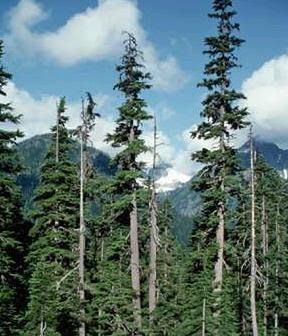Poison Hemlock
Poison Hemlock, common name for poisonous herbs belonging to two different genera of the parsley family. Hemlock, or poison hemlock, is a large, coarse, unpleasant-smelling plant, all parts of which are poisonous and may be fatal if eaten. It is the poison hemlock that was used to put Socrates to death. Native to Europe, the plant is now naturalized in the United States and occurs as a luxuriant weed, up to 3 m (10 ft) tall, along roadsides and in abandoned fields. The dark-green leaves are divided and redivided into small, ovate, toothed segments. The hollow stems are characteristically blotched with purple. The small white flowers are grouped into flat-topped clusters called umbels. The poisonous principles in hemlock are alkaloids that affect the nervous system and induce trembling, loss of coordination, and paralysis of respiration.
The second type of poison hemlock are the water hemlocks, such as musquash root, related botanically to poison hemlock but toxicologically entirely different. The roots and, to a much lesser extent, the foliage contain a complex unsaturated alcohol that brings on convulsions. The roots grow in clusters of dahlialike tubers that are about 5 cm (about 2 in) long. The amount of root that must be eaten to cause death is very small. The plant grows in swamps, along streams, and in other moist locations. The foliage, which arises in early spring in a cluster from the roots, is divided and redivided into leaflets with regularly pointed and notched edges. A central vein runs the length of each leaflet. From it, secondary veins run toward the edge, ending in or near the notches of the leaf rather than in the points.
Scientific classification: Poison hemlocks belong to the family Apiaceae (formerly Umbelliferae). Hemlock, or poison hemlock, is classified as Conium maculatum and musquash root as Cicuta maculata.
The second type of poison hemlock are the water hemlocks, such as musquash root, related botanically to poison hemlock but toxicologically entirely different. The roots and, to a much lesser extent, the foliage contain a complex unsaturated alcohol that brings on convulsions. The roots grow in clusters of dahlialike tubers that are about 5 cm (about 2 in) long. The amount of root that must be eaten to cause death is very small. The plant grows in swamps, along streams, and in other moist locations. The foliage, which arises in early spring in a cluster from the roots, is divided and redivided into leaflets with regularly pointed and notched edges. A central vein runs the length of each leaflet. From it, secondary veins run toward the edge, ending in or near the notches of the leaf rather than in the points.
Scientific classification: Poison hemlocks belong to the family Apiaceae (formerly Umbelliferae). Hemlock, or poison hemlock, is classified as Conium maculatum and musquash root as Cicuta maculata.




